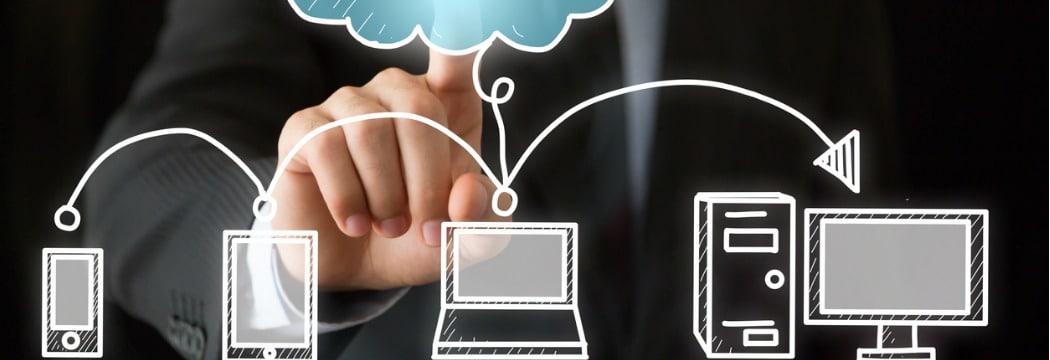In today’s workplace, technology that streamlines communication is neither a headache nor a luxury, but rather an expectation.
Millennials now make up 35% of the US labor force, outnumbering any other working generation, according to a Pew Research Center analysis. Meanwhile, the oldest members of Generation Z, or those born after 1996, are entering the workforce too. That means modern workers grew up with technology like texting, IMs, Skype, FaceTime, and cloud storage—and they’re bringing those technologies into their professional lives.
Employees today want more ways to communicate and less steps to get there. They want to send an instant message with a link to a file and get feedback in real-time. They want the freedom to communicate with colleagues on their work computers during the day and on their phones when out of the office.
So, how can organizations provide immediate, convenient, and seamless communication in a cost-effective and organized manner for their workforce? That’s where unified communications as a service, or UCaaS, comes in.
What is unified communications as a service?
Simply put, unified communications as a service (UCaaS) is the combination of team messaging, video conferencing, and cloud phone, all packaged into a single platform. It allows colleagues to communicate using any of those channels from anywhere, anytime, and on any device.
UCaaS includes popular features such as presence status (available, busy, invisible, do not disturb), chat history, file sharing, teams, groups, and integrations with third-party apps like Salesforce, Microsoft 365, and Google Workspace. UCaaS condenses all of the most important application functionalities into a single platform to achieve a seamless workflow, elevate productivity, and make work feel less chaotic.
What is “as a service”?
“As a service” describes the cloud delivery model. Working in the cloud means an employee can access every message, file, link, and third-party service anywhere they have a connected device. In the cloud, files won’t get lost if a computer restarts, and teams can simultaneously edit documents in real-time, schedule meetings with others in the organization, and chat with teammates across the globe.
Why unified communications are important today
The COVID-19 pandemic transformed remote work from a nice-to-have perk to business necessity overnight. Organizations were forced to adopt cloud-based collaboration solutions within just a few weeks. A Gartner report found that only 12% of organizations felt completely prepared.
In a desperate effort to find quick solutions, many organizations hastily adopted remote work techniques such as team messaging, video conferencing, and cloud phone tools. However, they adopted these solutions as separate applications, which added unnecessary steps to a digital workflow that was intended to make communication easier.
The deluge of technology in today’s workplace is bombarding employees, who often have to toggle between 15 different apps in a single hour. More than two-thirds of employees say that they waste more than 60 minutes a day navigating between apps, and 31% lose their train of thought when they do.
When combined with other tasks, emails, meetings, and notifications, it’s easy to see how workers are being overwhelmed. This leads to less concentration, less productivity, and lower performance.
UCaaS streamlines communication
UCaaS is designed to mitigate the confusion that comes from switching between apps to complete a task. With a platform like RingCentral, Employee A can send a message to Employee B, who can open the file, edit the file, and start a video chat from the same application. Unifying these digital collaboration tools saves time, limits distractions, promotes efficiency, and aligns with most organizations’ long-term IT goals.
The modern workplace is increasingly digital, and it will be more digital in the post-COVID-19 workplace. Even as state-mandated stay-at-home orders are lifted, many organizations are keeping their employees remote for the foreseeable future.
Remote work is a creative and cost-effective way to promote productivity for your company and a healthy work-life balance for your employees. In fact, 43% of full-time American workers say they want to continue working from home post-COVID, and 20% say their employers are drawing plans to make it happen.
The future of workplace communication
According to a Gartner survey, 74% of CFOs plan to shift some employees into permanent remote work positions. If employers are increasingly embracing remote work, then technology must follow.
While using multiple, disparate apps for communication may have bridged the gap during the initial shock of working from home, it’s not sustainable. Workplace communications are dominated by emails, phone calls, team messages, text messages, and meetings all happening in different applications.
Imagine trying to keep an organized flow of information when conflicting information is flowing in every direction. It’s no wonder that 66% of workers want a single platform for all of their communications.
UCaaS lays the communication foundation for streamlined communication in the new-modern workplace. Employees can access everything and collaborate in real-time on their desktops, phones, or tablets, and at home, in conference rooms, or at their desks. Integrating communication saves time, supercharges productivity, increases communication among team members, and gives employees a sense of control over their work.
Unifying your collaboration efforts ensures every bit of communication makes your organization more productive. The RingCentral app will set your company up for success whether you plan to shift employees to remote work or bring them back into the office.
Originally published Jun 23, 2020, updated Jan 18, 2023





